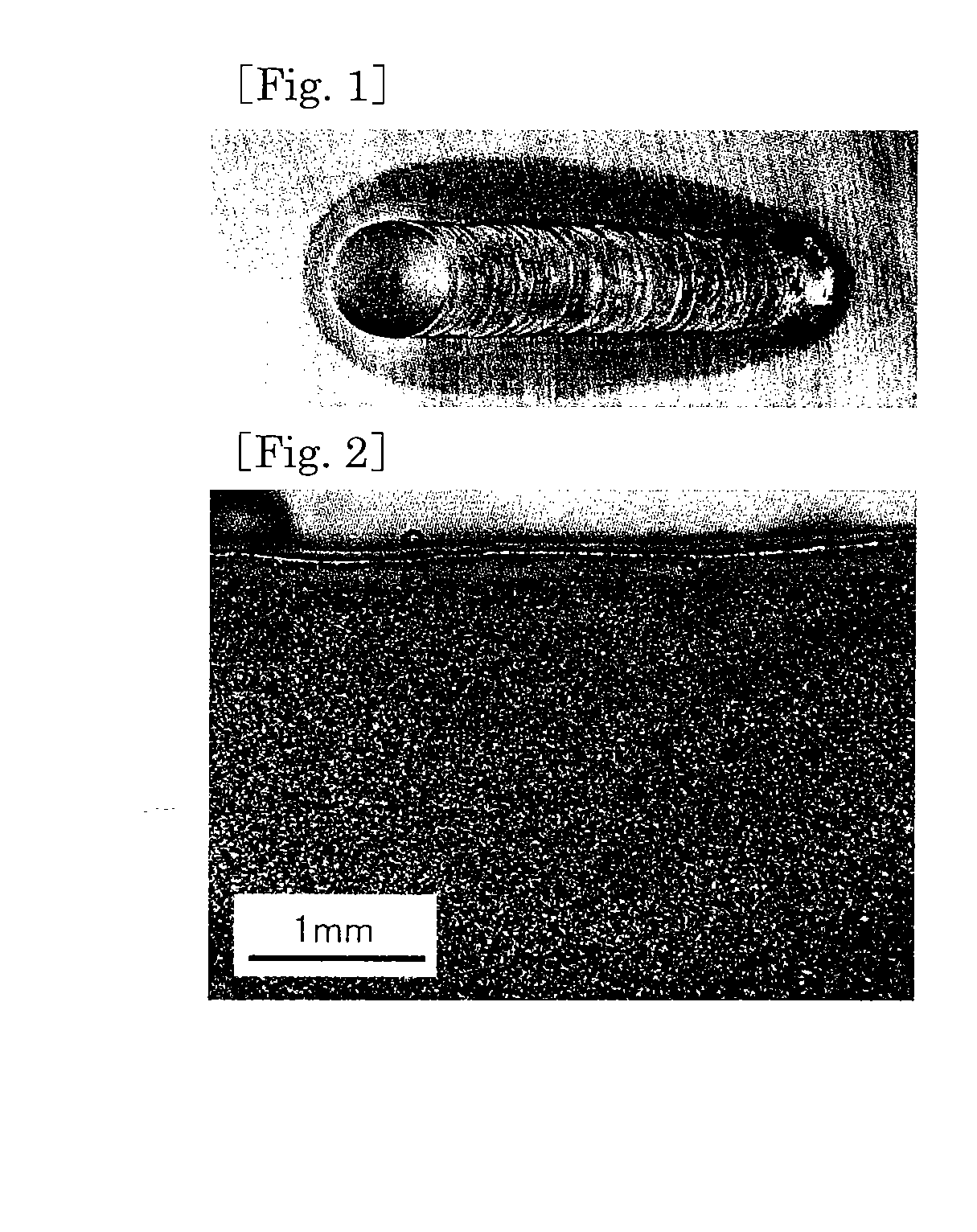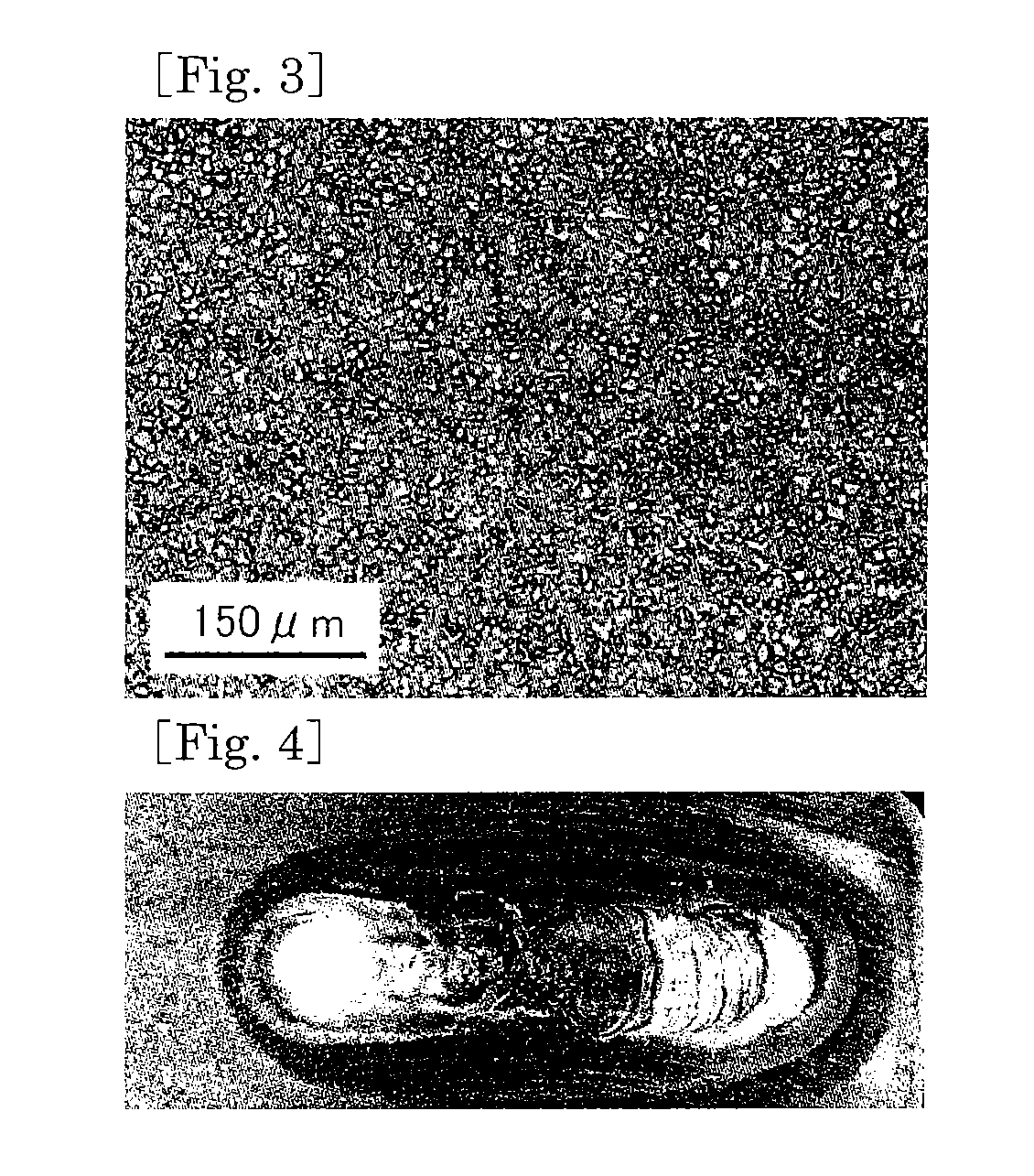Melt-solidified substance, copper alloy for melt-solidification and method of manufacturing the same
a technology of meltsolidification and solidified substances, which is applied in the direction of resistance welding apparatus, arc welding apparatus, reciprocating piston engines, etc., can solve the problems of structural impairing ductility, the above problem cannot be avoided, and the mechanical properties of the welded area deteriorate, so as to improve the corrosion resistance remarkably, improve the corrosion resistance, and improve the corrosion resistance
- Summary
- Abstract
- Description
- Claims
- Application Information
AI Technical Summary
Benefits of technology
Problems solved by technology
Method used
Image
Examples
Embodiment Construction
[0111]As an embodiment, melt-solidified substances according to the present invention Nos. 1 to 67 illustrated in Tables 1 to 4 are manufactured.
[0112]Each of the melt-solidified substances Nos. 1 to 43 is obtained by forming a bead A, a melt-solidified part, on the surface of a copper alloy plate A1 with a TIG welder. That is, the bead A (melt-solidified part) is formed on the copper alloy plate A1 to have a welding pool (welded area) of about 3 mm in depth with the bead of about 8 mm in width by moving an electrode for about 40 mm in the across-the-width direction of the plate at the welding current: 150 A (varying from 140 to 180 A depending on a material) and the moving speed: 100 mm / min, while the electrode is kept 1 to 2 mm apart from the copper alloy plate A1. Meanwhile, in determining the welding current, top priority is given to obtain the welding pool as large as described above. The copper alloy plates A1 are the copper alloys for melt-solidification according to the inve...
PUM
| Property | Measurement | Unit |
|---|---|---|
| grain size | aaaaa | aaaaa |
| mass % | aaaaa | aaaaa |
| mass % | aaaaa | aaaaa |
Abstract
Description
Claims
Application Information
 Login to View More
Login to View More - R&D
- Intellectual Property
- Life Sciences
- Materials
- Tech Scout
- Unparalleled Data Quality
- Higher Quality Content
- 60% Fewer Hallucinations
Browse by: Latest US Patents, China's latest patents, Technical Efficacy Thesaurus, Application Domain, Technology Topic, Popular Technical Reports.
© 2025 PatSnap. All rights reserved.Legal|Privacy policy|Modern Slavery Act Transparency Statement|Sitemap|About US| Contact US: help@patsnap.com



